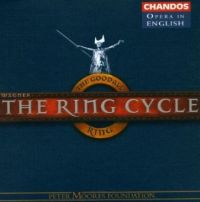Wagner Ring Solti

Many music critics, listeners, and audiophiles (myself included) consider the Georg Solti Ring to be the greatest record ing of all time. It is difficult to dispute that conclusion. First of all, the size and scope of the project at the time it was recorded (1958–1965) was unprecedented. The most important reasons for the success of this Ring as a performance are Solti and the Vienna Philharmonic Orchestra. In 1958, Solti was a young and rising conductor with potential, but no one had a clue about his Wagnerian credentials, except perhaps producer John Culshaw. Solti was an enormous gamble that paid off more than anyone could have imagined.

Der Ring des Nibelungen (The Ring of the Nibelung), WWV 86, is a cycle of four German-language epic music dramas composed by Richard Wagner. Solti was the first to record the entire Ring Cycle. Stream Wagner: Der Ring des Nibelungen by Wiener Philharmoniker and Sir Georg Solti and tens of millions of. Buy Wagner: Der Ring des Nibelungen by Richard Wagner, Sir Georg Solti, Vienna Philharmonic Orchestra, Vienna State Opera Chorus, George London, Kirsten Flagstad, Set.
Despite being known throughout his career for his hyperdynamic, hard-driving approach, Solti does neither here. His sensitivity to Wag ner’s micro and macro architecture is quite remarkable. There is little doubt that this is the most dynamic and powerful Ring ever recorded, but it is not overstated or over- driven. Program Microbuze Bucuresti Targoviste. There is an appropriate emphasis on the orchestra that is central to Wagner’s concept.
He captures the grandeur of the music, but he maintains a transparent sonority with the help of the sound. Solti is aided immensely by the Vienna Philharmonic Orchestra, but in the final analysis, he is the conductor, and the orchestra has never sounded quite like this in any other recording.
This is especially true of the brass section that is so critical to the Ring sonority. Brendan Benson One Mississippi Rar here. That includes the dark, burnished, peerless French horns, as well as the silky sweet strings and juicy harps. All of this is presented flawlessly by the amazing sound.
Culshaw and engineer Gordon Parry placed the soloists on an elevated stage behind the orchestra, exactly as you would hear them in an opera house. Add to this the almost palpable sense of space that is perhaps unique to these recordings, and you have the principal reason why the Solti Ring became a best seller. The cast included the best Wagnerian singers available, but some of them, most notably Hans Hotter, were past their prime.
Hotter is clearly laboring in “Wotan’s Farewell” from Die Walküre. Wolfgang Windgassen is also sometimes stretched to his limits, but remains entirely musical and credible as Siegfried, probably because no one knew the role like he did. Earlier Bayreuth performances of the Ring with Hotter and Windgassen in their primes were subsequently released, but they don’t have Birgit Nilsson, and their sound is not remotely comparable to the Decca Ring. Previous CD releases of the Solti Ring have been marred by a steely hardness of the voices and orchestra primarily in the high frequencies.